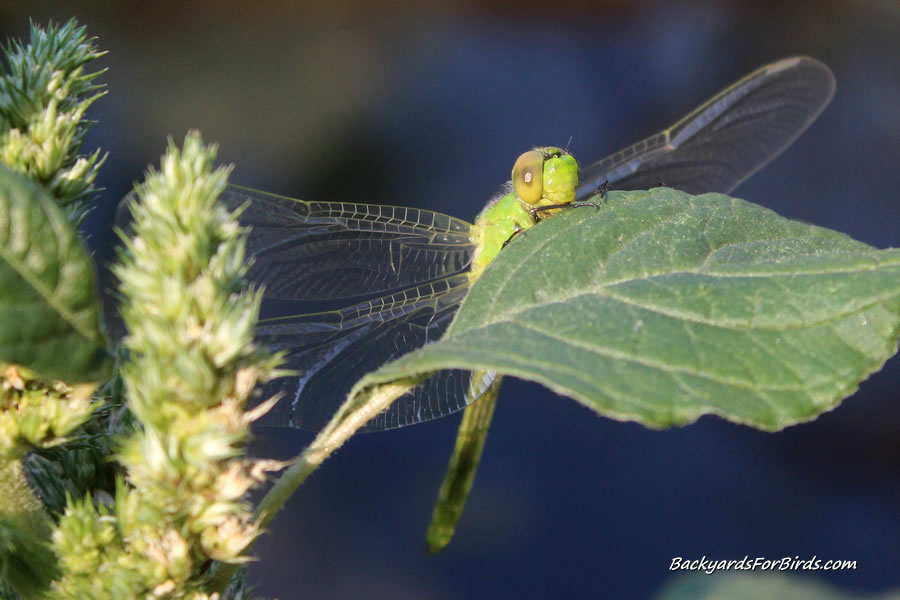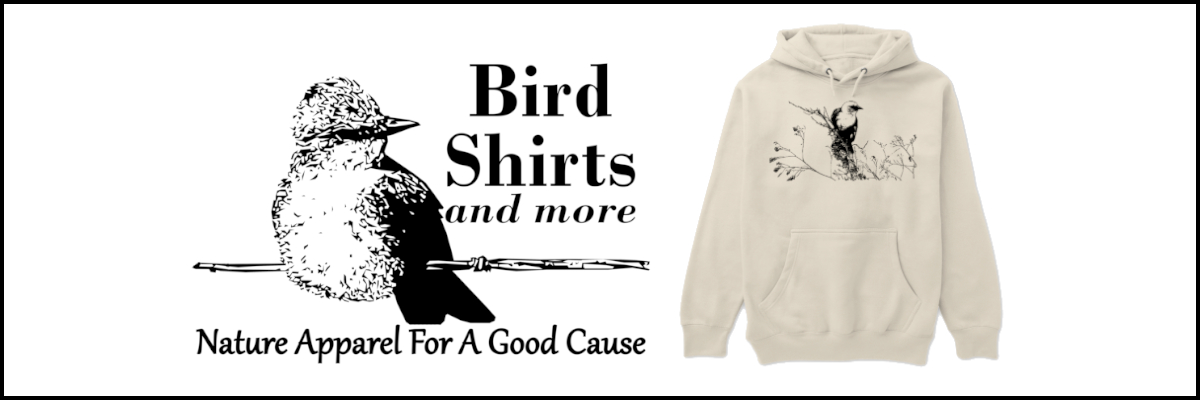I am fascinated by nature, even more so by what kinds and how much of nature we can actually have in our own backyards to learn about and enjoy.
Birds and bird watching will always be my favorite part of a backyard garden, but I am finding out first-hand birds are only a small part of what a tiny urban quarter-acre lot can attract and sustain.
Last summer, as an example of this, I texted my brother and mentioned he needed to put in a dragonfly pond in his backyard.
He has already done some incredible work landscaping his yard to not only look attractive to the human eye but also to invite and support a variety of wild creatures, especially birds.
Almost immediately, he started to research how to build a dragonfly pond, and within a couple of weeks, his kids, shovels in hand, were starting the process of digging a hole for what is now a bonified, productive dragonfly pond.

Small, simple backyard dragonfly ponds actually do attract dragonflies, we have seen it work first hand.
Dragonflies come to small ponds to lay their eggs in the shallow water where they eventually hatch and turn into larvae, which spend the next few weeks or so eating as much mosquito larvae as possible before getting ready to climb out of the pond, thus letting the adult dragonfly finally emerge from the exoskeleton and take to the sky for a new life.
It is a fascinating phenomenon for sure, and one I was actually able to witness just yesterday, in fact, as I observed what we have identified as a western pondhawk dragonfly emerge from our pond, dry off, and minutes later take to the neighborhood skies in search of mosquitos.
Being dug late last fall, this is literally the first summer my brothers’ pond has been in action, and we have already counted several dozen dragonfly larvae of at least 2 different species emerge and give way to the adult dragonfly inside.
Dragonfly ponds need not be very large or elaborate to attract breeding dragonflies. They only need to have a few simple aspects to attract dragonflies to lay their eggs.
First, a dragonfly pond needs to have still or slowly moving water.
Fountains or filters can hurt the dragonfly larva and are best not added to such as structure. A dragonfly pond should be just that, a small pond, plain and simple.
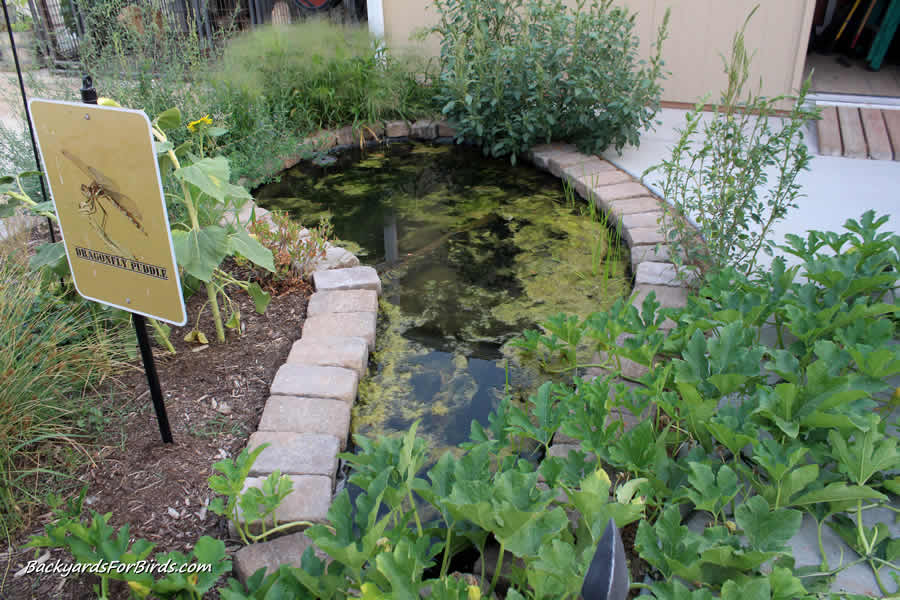
Second, if you live in an area where water freezes during the winter as we do, part of the pond needs to be deep enough to where it won’t freeze.
Ours is over 2 feet deep in the deepest part and stays open at the bottom of the pond all winter long.
This is important as some species of dragonflies will lay their last round of eggs in the pond as fall gives way to cooler temperatures, and the eggs and larvae, depending upon the species, will have to spend the winter under the ice until spring arrives, warming up the water and activating the first generation of the next year’s dragonfly population.
Third, dragonfly ponds also need some way for the larva to climb out of the water, allowing the dragonfly to emerge and also dry off before it can fly.
Having nearby vegetation that lays down in the water and also planting pond plants that stick up out of the water will give the dragonfly larva something to cling on to and climb out of the water when it’s time to emerge.
Our pond has both pond plants and low-hanging border vegetation, but we have found most of the larva cling onto and use the bricks we laid around the pond’s edge when they are set to emerge.
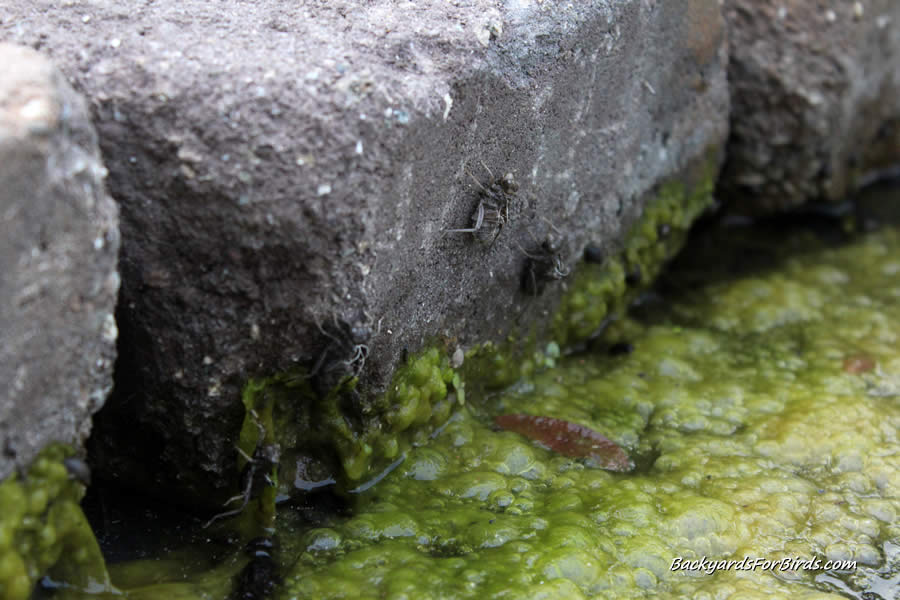
A dragonfly pond should have a couple of different depths, with, as I’ve just mentioned, the deepest part being too deep to freeze.
My brother’s pond is about a foot deep in the shallow end and over two feet deep in the deepest part.
The best place for a dragonfly pond is where it can get a lot of sun, which not only encourages a lot of vegetation growth in and around the pond but also helps the dragonflies dry off before they can fly.
To keep the dragonfly pond full and the water from leaching out into the ground, we placed a large rubber liner in the pond and covered it with a couple inches of gravel for pond vegetation to eventually grow.
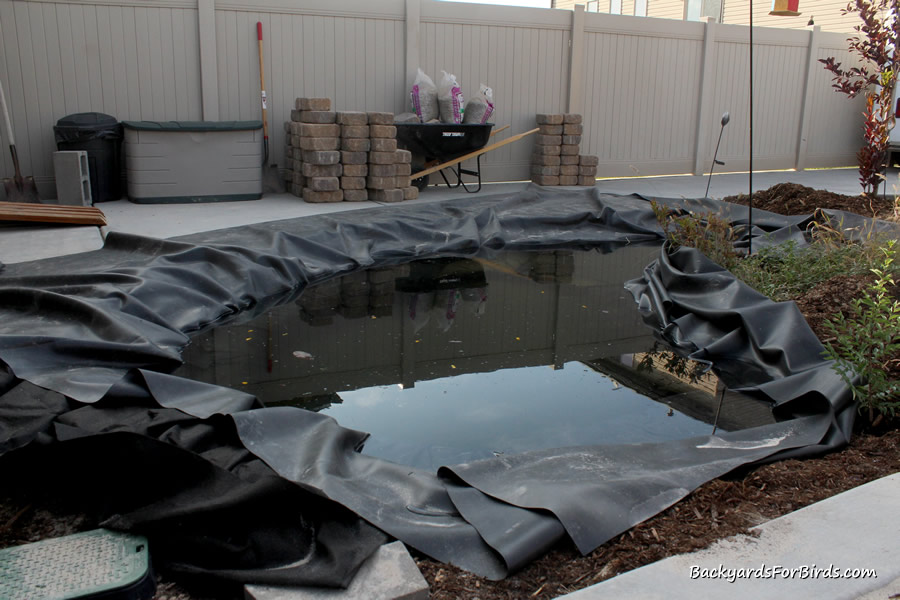
A dragonfly pond is a small ecosystem, of sorts, and the sun is vital for a pond to function properly.
We find all sorts of creatures swimming around in the pond, many of which are food for the dragonfly larva.
Mosquitos will be attracted to the pond, but this is a necessary part of attracting dragonflies as dragonfly larva feed on mosquito larva.
This is actually how dragonflies live, they need to be where mosquitos are present as mosquitos are one of their main food sources, both in the pond as larvae and as adult dragonflies in the backyard.
Although the pond will breed mosquitos, as that is actually part of the process to attract dragonflies, we personally haven’t noticed any more mosquitos in the yard than in years past.
Dragonflies are actually very beneficial to have around as they naturally help control the mosquito population and are very entertaining to watch as well.
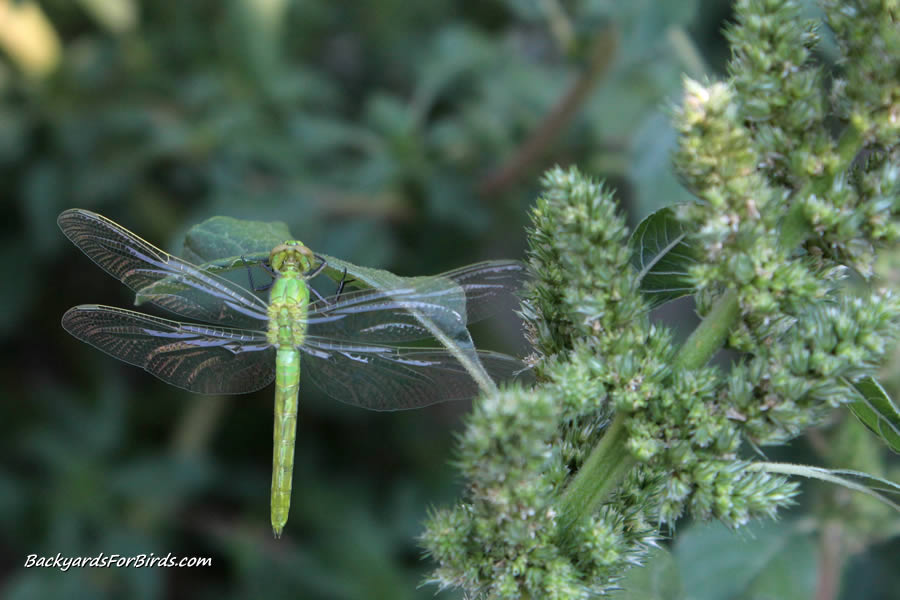
Mosquitos are so prolific and can breed in even the smallest collection of water, they will always be a nuisance no matter where we live.
But by offering a small, simple dragonfly pond, we are actually seeing a large increase of dragonflies in the yard and neighborhood over the past several weeks, with the hopes this increase in dragonflies will help control the mosquito population even more so.
A small backyard dragonfly pond does bring in more dragonflies to the yard, which in my eyes are very entertaining to watch as they scour the sky in search of mosquitos and other flying pests.
Dragonfly ponds can be both beautiful as well as functional if designed and landscaped the right way.
It’s all a matter of personal preference, but having a dragonfly pond in the middle of a flower garden is a very nice amenity to have.
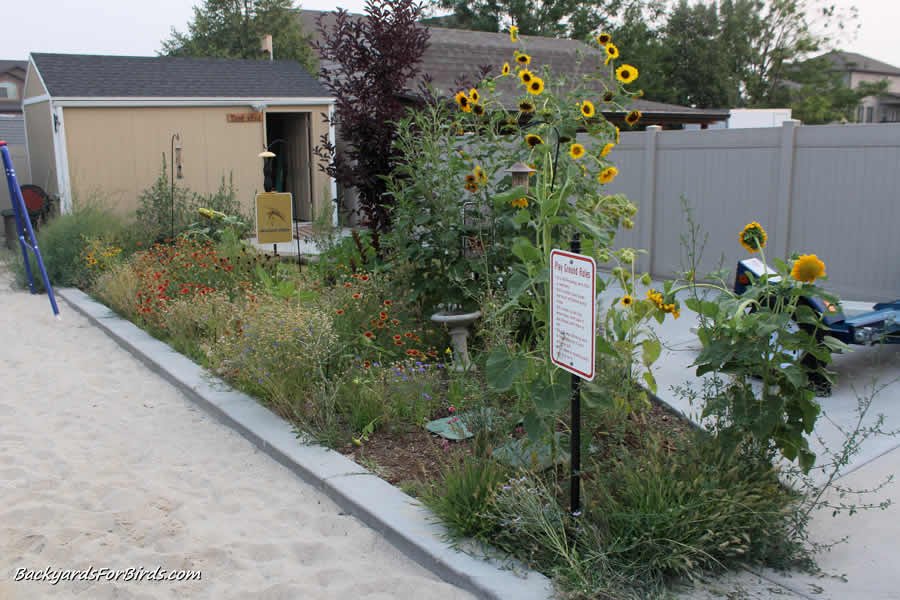
It not only attracts dragonflies, but we have also noticed the dragonfly pond attracts a lot of summer birds as well, even when there are several birdbaths to drink from placed throughout the yard.
We appreciate your readership and offer you to subscribe to our blog about backyard birds, bees, butterflies, and, of course, dragonflies.
We enjoy nature and find it even more entertaining and enlightening when we can have it in our own backyards.


